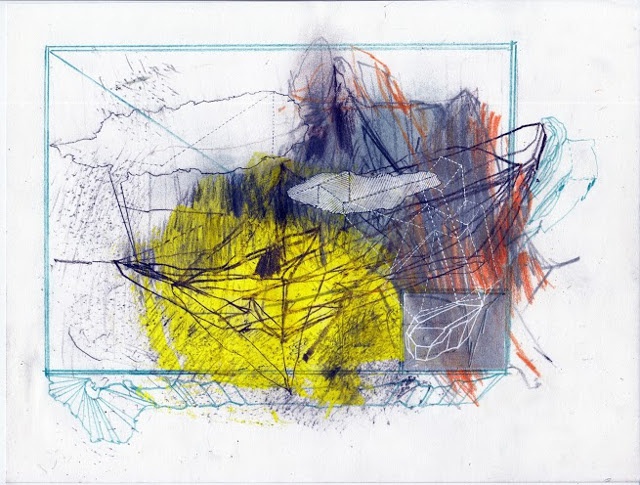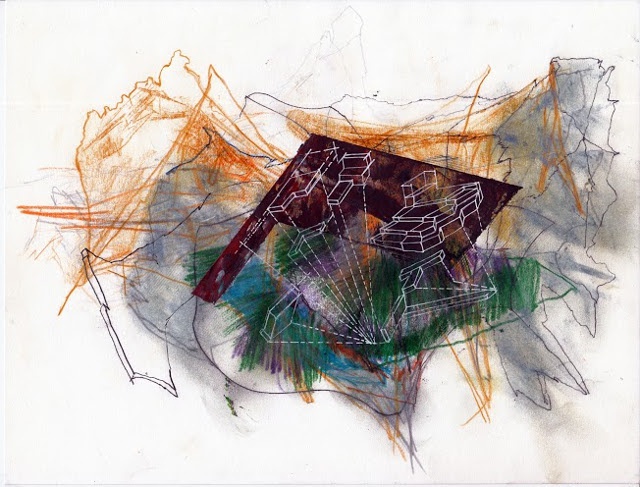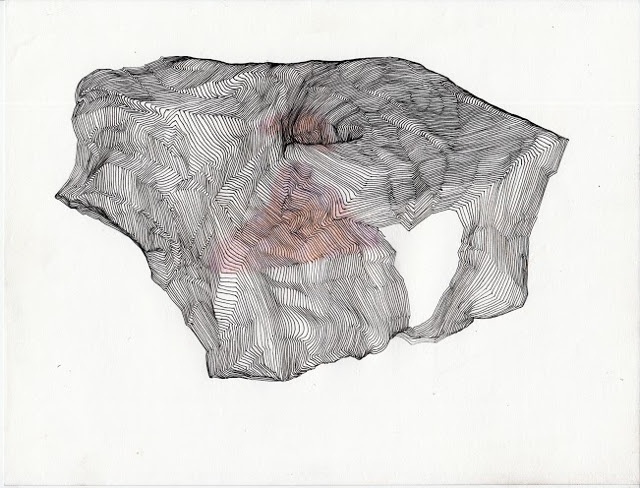Reviews
Colony – Latitude
Shady El Noshokaty at Gypsum Gallery, Cairo
Cairo-based artist Shady El Noshokaty has plans over the next few years to colonize 15 cities, villages, parks and parking lots around the world whose shape is similar to a birthmark on the artist's left hand. Some of El Noshokaty's planned colonies, such as two car parks in his home city of Damietta, should be an easy endeavour, despite Egyptian security force crackdowns on anything 'suspicious'. Colonizing the Israeli agricultural settlements of Sde Nitzan, Yesha, Ami'oz, Ohad and Talmei Eliyahu, or the Syrian town of Mhardeh, caught in the midst of fights between pro-Assad forces and Jabhat al-Nusra for over a year, however, seems a more challenging goal. In each colony, El Noshokaty will plant a flag decorated with a pyramid of rats, and present a series of performances and installations inspired by each location's history.
This 15-part project, titled Colony – Latitude, was introduced through an exhibition at Cairo's Gypsum Gallery between 5 October and 25 November 2015. For his exhibition, Noshokaty presented a living sculpture that grew over an eight-week period: a bubblegum-pink mountain range presenting the highest land points in each of his chosen colonies. The project began by the artist exploring the form of a skin discoloration on his hand, and using it as the 'topographical' shape from which to locate 15 existing towns, cities and islands that match the contours of his birthmark. For the sculpture, Noshokaty cut up a box to match the outline of the birthmark and designed a skeleton frame from it. An ice sculpture then grew out of the box from copper tubes that liquefy Freon gas into ice, adding layers to the 'mountains' that formed. At once fantastic and otherworldly, industrial and organic, the evolving form brought different associations to mind. One visitor compared the sculpture to a freshly slaughtered animal carcass. Noshokaty spent three years researching the 15 locations that built up the points in his three-dimensional map-sculpture, and presented his findings in a video projected in the gallery alongside it. In terms of finding matches to the birthmark that informed his selection process, the video reveals Mhradeh city and Zinave National Park in Mozambique as perfect matches, their contours captured via Google Earth, while Syria, Palestine, Mexico and the USA revealed weaker relations to the shape of the mark on Noshokaty's hand. On this point, however, Noshokaty has noted his expectation for the borders and topographies of the places he has found to change over time, hence his use of ice to create a topographical sculpture that also changes.
Colony – Latitude owes much to Ard al-Lewa, an informal neighbourhood in western Cairo where Noshokaty has lived for the past decade, and where he developed a growing interest in the relationship between architectural and geographical space. Over the past 30 years, a mishmash of residential buildings has replaced agricultural land in the area, streets have replaced former irrigation canals, and the neighbourhood borders continue to expand. Neither purely urban nor rural, Ard al-Lewa is in a constant state of transformation thanks to the local community (rather than the municipality or any state institution), who exist like a group of cells that have migrated and grown organically over time, like a colony. These observations spurred Noshokaty's interest in cartography: the artist began identifying map-like shapes everywhere – in water puddles, carpet designs, and finally his birthmark, which he first compared to a map while conducting research for his previous major project titled Stammer (2007–10). But Noshokaty only started fully delving into the topic in Mapping memory in 18 days, a series of very personal and abstracted ink drawings that he published in Art Margins in 2014, in which he attempted to reflect the intensity of daily life in Egypt post-January 2011. A few of these drawings on grid paper, some of which appear similar to mind maps, highlight how Noshokaty approaches his research projects. A selection made their way into Colony – Latitude along with drawings made specifically for the show. These are utterly beautiful to look at, offering subtle yet accessible entry points into the artist's thought process: on some, Noshokaty has noted the different points in time when he has reworked an idea or diagram using symbols and markers incorporated into the drawings.
Sharing such insights with audiences is refreshing, though this has long been part of the artist's practice – as a teacher, he often encourages students to present their processes in non-didactic ways. Noshokaty also shares the sketches and references behind Colony – Latitude on Facebook with his followers, including a political cartoon titled The Devilfish in Egyptian Waters, published in the British satirical periodical Punch in 1888. The cartoon depicts the United Kingdom as an octopus with the head of John Bull, claiming land across the world with its arms, though it seems undecided about Egypt. Yet, Noshokaty eschews the strong political focus often associated with such studies and references. Rather than entangling himself in the modern and contemporary history of imperialism, he seems more interested in human behaviour. Under-riding this investigation is a key question: What is the relationship between the topography of the body and that of the earth? Noshokaty's main concern is challenging common understandings of what a colony can be.
Colony – Latitude was on view at Gypsum Gallery until 25 November 2015.
Read Shady El Noshokaty in conversation with Omar Kholeif in 2012 here.








